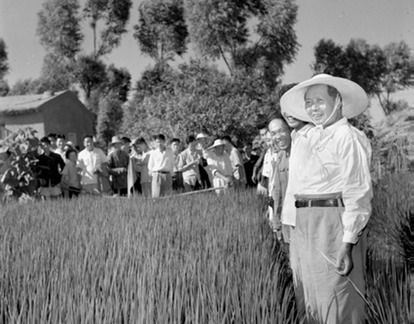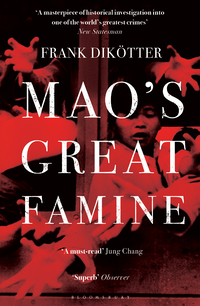Mao-made Famine
Forty-five million is a large number to comprehend. It is around five million short of the current population of England. Forty-five million is also the number of Chinese who died in the Mao-made famine otherwise known as the Great Leap Forward between 1958 and 1962. This is the era that the Archbishop of Canterbury, Rowan Williams, once wistfully referred to as having "a culture of total state provision" and "something which guaranteed everyone's welfare".
The Archbishop would be well-advised to read Mao's Great Famine (Bloomsbury), a powerful new book by Frank Dikötter, a Swiss-born historian at the University of Hong Kong. Dikötter has calculated the total number of deaths, saying that the real figure may be 55 million. The Great Helmsman claimed that if half the Chinese people starved, the surviving half would eat better. In fact, they ate Szechuan white mud or each other. Dikötter tells me that this implacable mindset was forged by two decades of civil war and party purges, in which the ends of the Chinese Revolution justified any means.
Dikötter's book is closely connected to another study of failed socialist planning, Francis Spufford's imaginative and witty Red Plenty (Faber and Faber), which is based on Khrushchev's boast that the USSR would soon surpass the material wealth of the US. The Sputnik programme, which started in October 1957, symbolised such claims. The Chinese had their own such programme, although these were "sputnik" fields on giant communal farms — one (largely vacant) pig shed was ten kilometres long — where rice was planted so deeply or densely that it withered. A lack of fertiliser was blamed. Peasant houses were demolished and the rubble crushed in order to use the animal urine retained in the mud bricks on the fields. Even the dead were not safe, with their coffins used as firewood and their corpses recycled as fertiliser, until the darker practice of necrophagy set in. Nor were the sparrows spared, slaughtered in clouds in order to "account" for grain lost through a hugely wasteful human storage and distribution system.
Peasant labour was simultaneously subtracted on an epic scale, either to toil on pharaonic irrigation schemes, such as the Three Gate Gorge Dam, or at night in backyard furnaces that converted farming implements into low-grade iron ore. Conditions in the overcrowded cities were also atrocious, as Mao demolished much of the architectural past, notably to create Tiananmen Square. People sold their blood, or their children, to get their next mouthful of rice. At lengthy party conferences, the food-tasters — for suspicion was pervasive — fell down drunk or vomited amid the super-abundant free catering.
Why did this famine happen? Using surreal production figures, party officials removed a purely notional grain surplus (and much of the country's livestock) in order to feed select urban industrial workers and to pay for Russian arms and capital goods. Ruthless competition spread to the socialist camp. The suspicions that characterised the Sino-Soviet relationship are a sub-theme of Dikötter's book, with the strong swimmer Mao almost allowing Khrushchev to drown as he flailed around in a rubber ring in a pool. After his definitive break with Khrushchev, Mao rapidly tried to amortise China's enormous debt to the Soviets while assuming the role of aid-giver in chief to the wider communist world. While Chinese peasants ate mud, the Albanians or Cubans consumed their pork and rice.
At the end of this fine book, I wondered why the death of 45 million people in four years had made such slight impression on the world's consciousness. The term "genocide" is too specific to be of much use. The word "famine" conceals more than it reveals, as if this was an act of nature. The term "peasant" also distances us from the victims, it being "easier" to empathise with the mainly urban victims of the later Cultural Revolution — killed, Dikötter says, partly to obliterate anyone who had criticised Mao's responsibility for the famine. Similarly, Stalin's 1930s purges of 600,000 party members have eclipsed the earlier terror famine waged against seven million Ukrainian farmers and Kazakh herdsmen. Dikötter tells me: "A strong Orientalist streak implies that loss of life in China matters less than elsewhere."
But as the Archbishop of Canterbury's crass intervention also reveals, a naive, residual belief that the aims were worthy, or the goals progressive, seems to excuse much, too — 45 million or 55 million lives too many in this case. Perhaps we should pulverise Lambeth Palace and Canterbury Cathedral into aggregate for the roads and feed senior clerics a diet of mud since their imaginations are so lacking?

